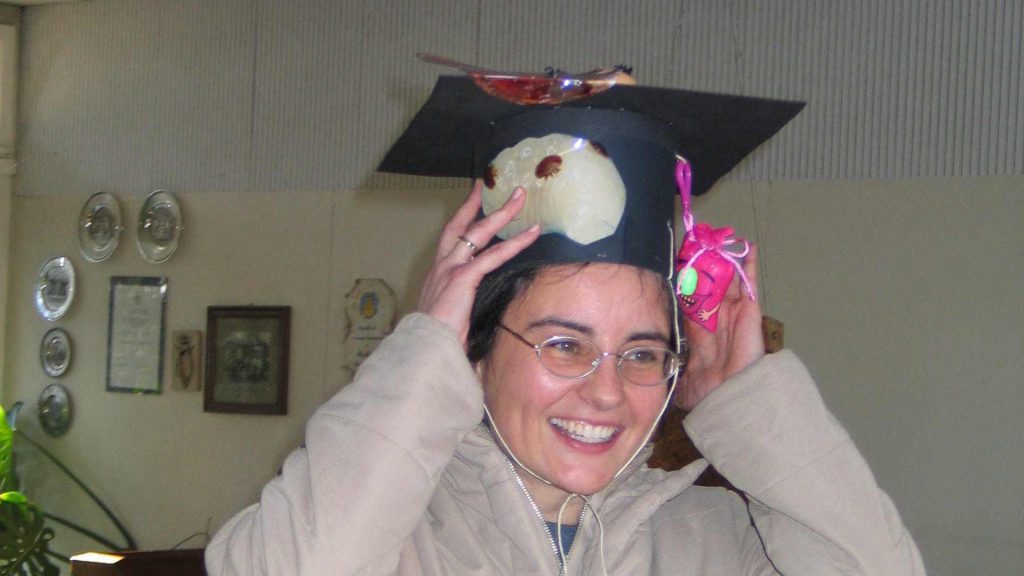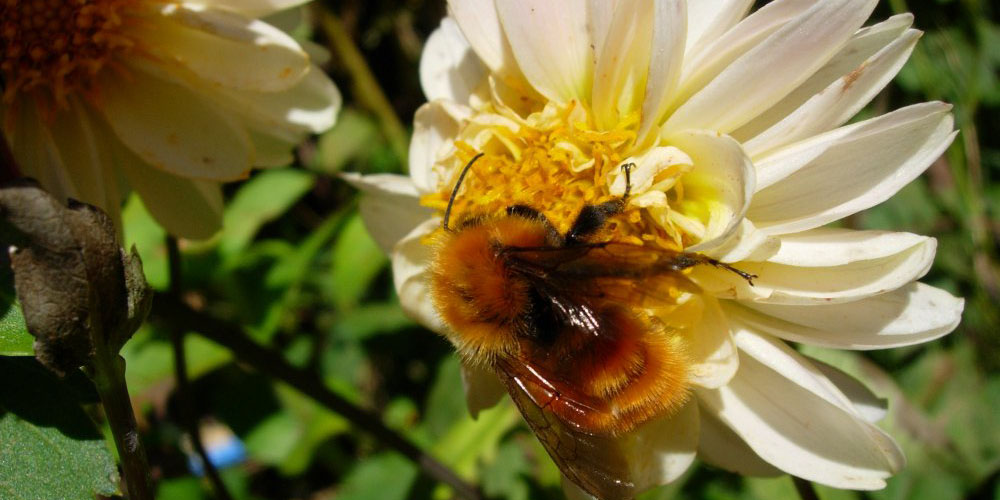One could think pollinator conservation is a very important issue and taken seriously all over the world. At the latest since the pollinator assessment from IPBES was published, the discussion about pollinator decline is going beyond science and conservationists. Very often I get asked about bees. Many want to start beekeeping. I then explain why I think this doesn’t help and try to give some direction. I’m on the side of “education” in a wider sense here. I provide information, try to increase understanding.
For efficient conservation, however, this isn’t enough. It’s also necessary to apply what you’ve learned. Then it opens opportunities and gives the foundation for better decisions, actions and even life. If you don’t put into practice what you learned, you only consume knowledge, and it doesn’t change anything. Therefore, it’s also necessary to change your behaviour. And we all know how difficult this is. How many times did you want to change something in your life and didn’t succeed? Now imagine how difficult it is when the aim is much larger and abstract. Like global warming or biodiversity loss.
Why pollinator conservation often fails
In the EU, we have a large Pollinator Initiative, plus seven national programs. Even though, now only four, as England, Scotland and Wales aren’t in the EU anymore. Brexit has an effect on several levels… but it’s still the European continent, so let’s count them in. All these programs create high expectations. A recent paper by Melissa Marselle and co-authors analyses how effective these programs are – and doesn’t give very encouraging results.
Much of the failure to halt biodiversity loss is not due to missing global and national policy aspirations, but due to a lack of specific goals, indicators and actions.
Marselle et al. 2020
Meaning: the intentions are there, but they don’t achieve the goals. Discouraging.
But as always when things don’t work, it’s useful to analyse the reasons. To improve instead of continuing on a street that doesn’t lead to the objective. The paper criticizes mainly two things:
- That the programs for pollinator conservation don’t use the whole range of tools for achieving the purpose.
- That the single measures often don’t specify who is addressed or who should actually do the things.
The latter is especially bad, in my opinion. It means that there are no differences. It’s a scattergun approach, instead of solutions tailored for the specific circumstances. This, in the end, will sometimes help. But many of the resources – work, effort, and money – will just seep away without any effect.
Approaches for pollinator conservation
Melissa Marselle and her co-authors analyse the causes for what they call the “implementation gap” – i.e. why the good intentions don’t translate into actions and results. One of the reasons is that most of the activities in the pollinator conservation programs rely on two factors:
- Education (23%), and
- Environmental restructuring (19%).
Education as in “increasing knowledge and understanding”, not in the broader sense I explained above. And though the premise “we only save what we know” is still true, knowing is only the first step. We then have to apply our knowledge and apparently these programs don’t manage to motivate actions.
This is related to the scattergun approach I mentioned above. Let’s approach this from an apparently unrelated perspective: when I did a first aid training years ago, we were told to assign tasks to specific persons: “You in the blue jacket, please call an ambulance!”; “And you, help me to put this person in a stable position!” and so on. Seeing somebody in trouble is overwhelming, many don’t know what to do or are afraid of doing something wrong. Fortunately, until now I had to use this knowledge only in smaller incidents.
Transferring this to pollinator conservation: if you learn about pollinators, their importance and decline, you’re overwhelmed. This seems so big. Especially if somebody like me is bothering you with “beekeeping doesn’t save the bees”. On the other hand, when you assign specific actions to specific groups, things get easier. And it has to get specific: there are some things everyone can do, others depend on the context. For instance, all farmers can create habitat for pollinators. But this would look different if we’re talking about an apple grower in Northern Germany or a vegetable farmer in Southern Spain. The context is different.
Environmental restructuring for pollinators
Creating habitat is one of my favourite topics. And in my work, I try to find specific approaches depending on the context. However, this paper made an important point: These actions think only of the pollinators, not of those doing them. I’m guilty of this myself. Although I always say that everybody has to do what he or she is able to, I think from the “bee perspective”. But it’s at least as important to motivate the farmer (to stay with this example) to continuously manage the bee habitat. Because it will need management. Also when the three-year project with EU subsidies is over.
Human behaviour does not change automatically with policy aspirations, but needs effective interventions that address the drivers of biodiversity loss and lead to action.
Marselle et al., 2020
This sentence also blew my mind, though it may seem obvious. It’s the curse of knowledge – for me, it’s so evident why one should continuously work on pollinator conservation. But I also understand that for a farmer there are thousand other things he has to think of.
Of course, Marselle et al. don’t only criticize. They also recommend what would be better. One aspect is especially interesting: Incentivization and modelling. This means that it’s easier to change your behaviour when you have a “why” that directly relates to your personal goals. And it gets even more attractive if your peers are engaged in the same actions. For example, an apple grower has flowering strips between the rows of trees because another grower told him that he had a much better yield by doing so. The higher yield is the incentive. The fellow grower is the model. There’s research saying that the measure is effective. But that a peer had good results motivates more than the knowledge alone. That this flowering strip is also a measure for pollinator conservation is secondary for him.
A more holistic view of pollinator conservation
I’m still an advocate for education. My education was the foundation of everything I do. However, this paper was a huge inspiration. It relates to the enthusiasm I talked about last time and to an older post of the different levels of (pollinator) conservation. I always like it when my views are challenged. In addition, it also reminded me that I already have some experience with “peer-group learning”. In my time in two bee institutes in Germany, we applied that: there were groups of beekeepers acting as multipliers for good practices. Those who don’t come to the courses at the institutes, learn from their peers.
I’m glad I read this. It comes at a time I’m rethinking my services. I will definitely apply this to how BeeSafe does pollinator conservation.




Hola.
Te saludo desde el Sur de CHILE.
PURRANQUE, Región de Los Lagos.
He agregado este sitio a “Mis Favoritos”.
Será un gusto enorme seguir tus comentarios y publicaciones.
Un abrazo, mucho éxito en tu trabajo.
Bruno.
Hola Bruno,
estoy contenta que te guste mi blog! Me imagino que ya estarás preparándote para el verano que viene, que te vaya bien!
Claudia